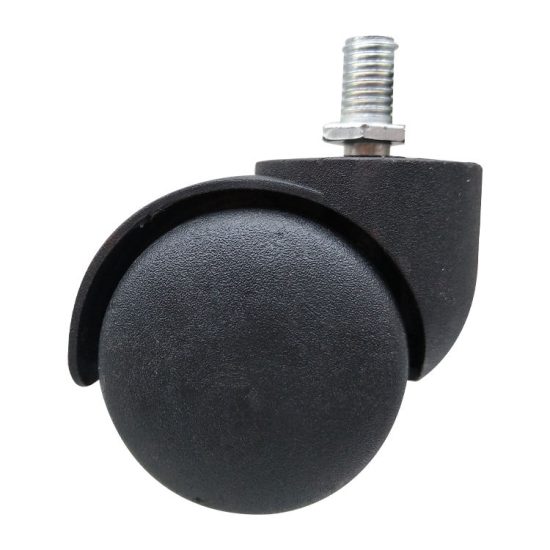Choosing the right caster, whether for furniture, industrial equipment, or any other application, is important to ensure ease of movement and safety. Casters come in various types, sizes, and materials to suit different needs. Here are some steps to help you choose the right caster for your specific application:
- Identify Your Application:
- Determine what you will be using the caster for. Is it for furniture, office chairs, carts, heavy industrial equipment, or something else?
- Weight Capacity:
- Calculate the maximum load the caster will need to support. Make sure to choose casters with a weight capacity that exceeds your heaviest expected load.
- Wheel Material:
- Choose the appropriate wheel material based on your floor type. Common wheel materials include rubber, polyurethane, nylon, and metal.
- Rubber wheels provide good traction and are suitable for indoor use on hard floors.
- Polyurethane wheels are durable and work well on both hard and soft floors.
- Nylon wheels are resistant to chemicals and work on a variety of floor surfaces.
- Metal wheels are ideal for heavy-duty applications but can be noisy and may damage floors.
- Wheel Diameter:
- The wheel diameter affects the caster’s mobility and weight distribution. Larger wheels roll more easily over obstacles and uneven surfaces.
- Mounting Type:
- Choose the right mounting type for your application. Common mounting options include plate casters, stem casters, and threaded stem casters.
- Swivel vs. Rigid Casters:
- Decide if you need swivel casters (which rotate 360 degrees for easy maneuverability) or rigid casters (which only move in a straight line). Many applications benefit from a combination of both.
- Brake Options:
- Determine whether you need casters with brakes for added stability and safety. There are different brake types, such as wheel brakes and total lock brakes.
- Environmental Factors:
- Consider the environment in which the casters will be used. If they will be exposed to moisture, chemicals, extreme temperatures, or other harsh conditions, choose casters designed for those conditions.
- Quality and Durability:
- Invest in high-quality casters that can withstand the demands of your application. Well-made casters are more durable and will require less maintenance.
- Installation and Compatibility:
- Ensure that the casters you choose are compatible with the equipment or furniture you plan to attach them to. Check for available installation options and hardware.
- Budget:
- Consider your budget, but prioritize quality and suitability for your application. Cheaper options may not perform well or last as long.
- Consult with Experts:
- If you are unsure about which caster is best for your application, consult with a caster specialist or supplier. They can provide recommendations based on your specific needs.
By following these steps and considering the specific requirements of your application, you can choose the right caster that will provide smooth mobility, durability, and safety.


